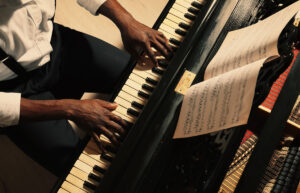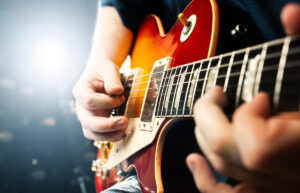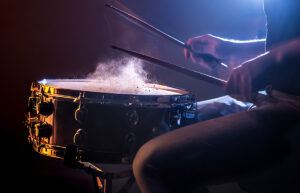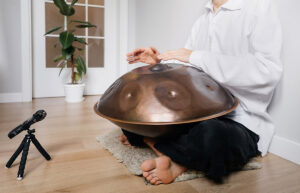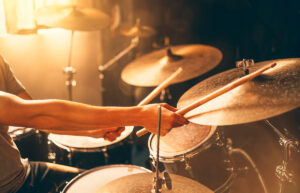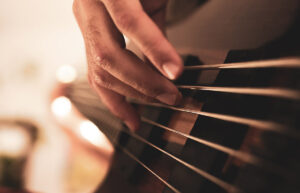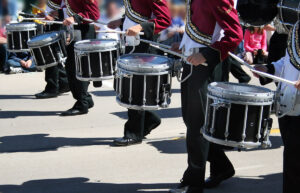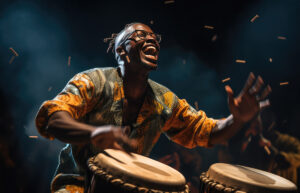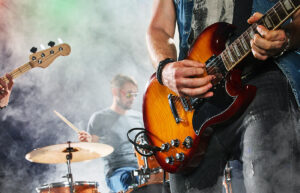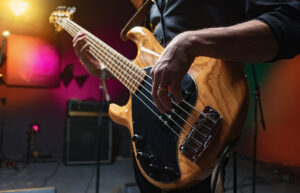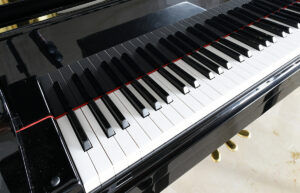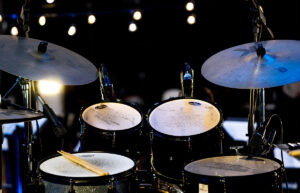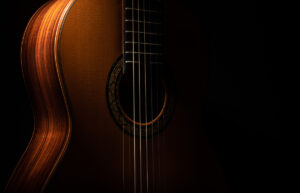Types of Hand Drums: A Comprehensive Guide
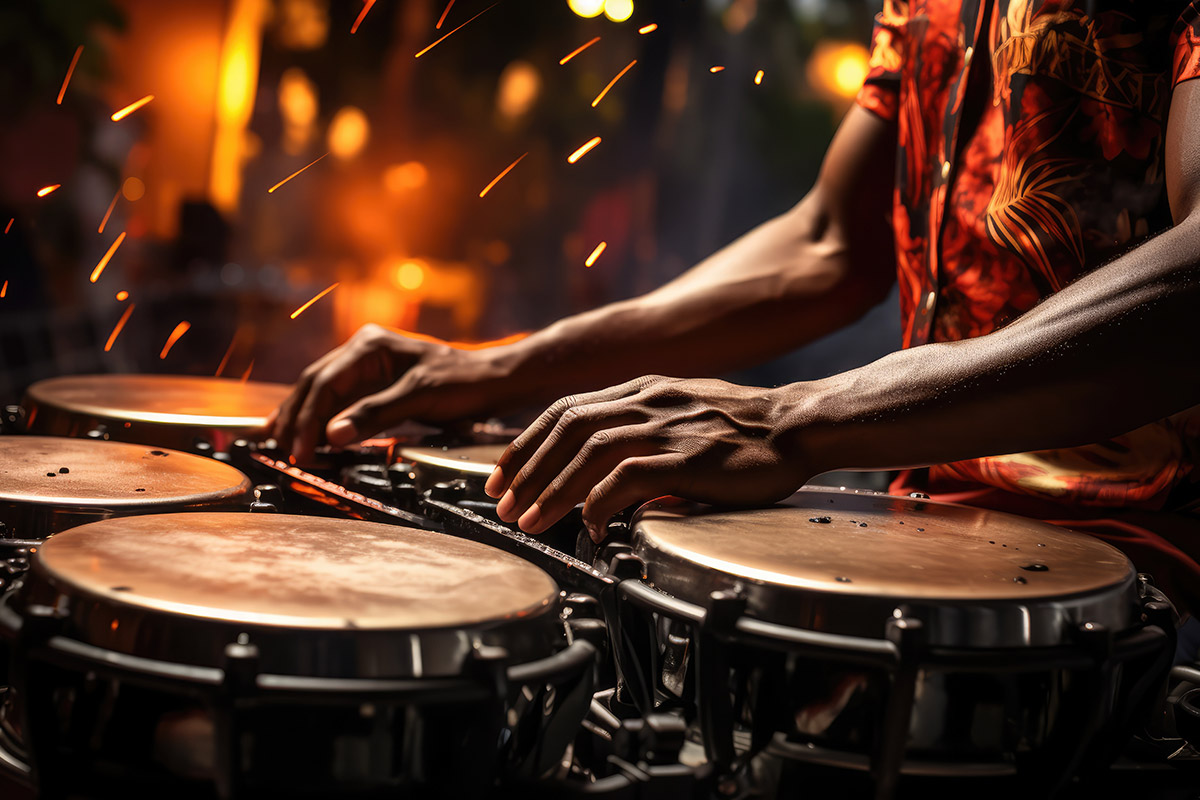
Hand drums are percussion instruments played by striking the surface with hands or fingers. Each hand drum has unique characteristics. Djembe, originating from West Africa, produces a resonant tone; the Conga, prominent in Latin music, offers rich, deep sounds; and the versatile Bongo, with two drums, adds rhythmic complexity. Frame drums, like the Bodhran, provide a melodic sound, while the Cajón, a box-shaped drum, produces beats and tones through hand taps. Cultural diversity meets musical expression as we guide you through the various types of hand drums.
Welcome to TheDemoStop, now join the community!
Connect with artists, fans and producers around the world.
What is a hand drum?
A hand drum is a percussive musical instrument designed to be played by hands or fingers, without the use of drumsticks or mallets. Hand drums are a diverse family of drums, varying in size, shape, and cultural origin. Instruments such as the djembe, congo, bongo, frame drums, and cajón exemplify the wide array of tonalities and rhythmic possibilities achievable with hand drumming. These instruments play a crucial role in cultural and traditional music, providing a dynamic and expressive outlet for rhythmic creativity.
Types of hand drums
Djembe

The goblet-shaped djembe is a traditional hand drum from West Africa, known for its diverse sound. The drum’s shape allows for a wide spectrum of tones. A djembe is carved from a single piece of wood and covered with a stretched animal skin, typically goat or cowhide. Players can produce deep bass, resonant tones, and crisp slaps by tensioning the drumhead with ropes or straps. The Djembe, a modern instrument used in ceremonies, celebrations, and contemporary music worldwide, has cultural importance and originates from the Mande people of Guinea, Mali, and the Ivory Coast. Because of its expressiveness, it’s a fascinating tool for community involvement and rhythmic experimentation. Famous players of the Djembe include Mamady Keita and Famoudou Konate, both renowned masters in the world of West African percussion. Well-known compositions featuring the Djembe include “Djembe Kan,” a traditional West African rhythm, and “Djole”, a popular dance rhythm from Guinea.
Doumbek
The doumbek, also known as darbuka, is a captivating hand drum known for its chalice-shaped body, commonly embraced in Middle Eastern Mediterranean regions. One of the most prominent players of this mesmerizing instrument is Hossam Ramzy, celebrated for his contributions to world music and notable collaborations with artists like Peter Gabriel. Among the iconic compositions of doumbek, “Misirlou” stands out, a traditional Mediterranean piece recognized from its use in Quentin Tarantino’s “Pulp Fiction.” This hand drum has a rich cultural history in the Middle East and Mediterranean regions, often accompanying traditional music and dance, and it continues to weave its enchanting rhythms across global music genres.
Tama

The tama, also known as the talking drum, is a type of West African drum distinguished by its hourglass form and unique capacity to replicate spoken tonal patterns. Made of wood and wrapped in animal pelt, the drumhead’s tension can be changed by applying pressure beneath the arm. This dynamic tuning allows proficient players to produce various pitches, giving the music a character akin to language. The tama has been used traditionally in ceremonies, storytelling, and communication by many West African groups. It is an essential instrument in West Africa music, particularly in regions like Nigeria, Ghana, and Senegal. It’s an interesting and adaptable percussion instrument providing a distinct tone and expressive possibilities. Babatunde Olatunji, a Nigerian percussionist is a famous player of tama and is responsible for introducing the instrument to a global audience with his performances and compositions.
Tonbak
The tonbak, also known as the tombak, is a traditional Iranian hand drum. It has a goblet-shaped wooden body with a thin, stretched animal skin head, usually goat or fish skin. Musicians play the tonbak with their fingers and palms to produce intricate rhythms and melodic patterns. Master percussionists such as Mohammad Esmaili, Pejman Hadidi, and Dariush Zargari are famous players of the tonbak and have gained recognition for their contributions to Persian classical and traditional music. One of the famous compositions featuring the tonbak is “Reng,” a lively and rhythmic piece often performed in Persian classical music. The tonbak is particularly popular in Iran and among Persian-speaking communities. It plays a central role in Persian classical and traditional music, accompanying various instruments and vocal performances, making it an essential element of Persian cultural and musical heritage.
Tambourine
The tambourine is a percussion instrument characterized by a circular frame, often made of wood or plastic, with metal jingles or discs set into the frame. Musicians create sound by shaking, striking or tapping the tambourine. The tambourine is known for its bright and jingling sound, which adds a rhythmic and melodic quality to music. Although the tambourine may not have individual famous players in the same way other instruments do, it is commonly used by percussionists and drummers as an accompaniment to other instruments and vocal performances. The tambourine’s versatile and portable nature makes it appealing to many musicians. Famous songs featuring the tambourine include “You Can’t Always Get What You Want” by the Rolling Stones, where the instrument adds a distinctive sound to the song. The tambourine is a global instrument found in various musical traditions and genres and is used in folk music, pop, rock, and religious music. The tambourine remains popular in Europe, the Middle East, and North America. Its simplicity and versatility make it a popular choice for adding a percussive and melodic element to music.
Congas

Congas are tall and narrow Afro-Cuban drums. The larger drum is known as a “tumba,” the middle-sized drum as a “conga,” and the smaller drum as a “quinto.” Modern variations may have synthetic materials instead of the hardwood shells and animal leather drum heads that were used in the past. Congas provide rich, resonant tones when played with the hands and fingers. These drums have evolved from their Afro-Cuban roots to become essential to many different genres, demonstrating their adaptability in both traditional and modern contexts. Congas are especially popular in Cuba, Latin America, and Latin jazz genres. Congas are renowned for their powerful and expressive percussion, which adds to the lively rhythms of world and Latin music. Famous players of the congas include Carlos “Potato” Valdes, Candido Camero, and Mongo Santamaria, who have made significant contributions to Latin jazz and Afro-Cuban music. Iconic compositions featuring the congas include “Watermelon Man” by Herbie Hancock, which prominently features the instrument, and “Oye Como Va” by Tito Puente.
Welcome to TheDemoStop, now join the community!
Connect with artists, fans and producers around the world.
Tabla

The Tabla is a classical Indian percussion instrument consisting of a pair of small, hand-played drums. The set typically includes a larger drum called the “dayan” and a smaller drum known as the “bayan.” Both drums are cylindrical, with the dayan having a wooden shell and a goat or synthetic skin head, while the bayan has a metal or clay shell with a skinhead.
Played with the fingers and palms, the tabla allows for intricate and expressive rhythms. Musicians can produce a wide range of tones, from resonant bass notes to sharp, percussive high pitches. Famous players of the Tabla include Zakir Hussain, Alla Rakha, and Ravi Shankar, who have elevated the instrument to international recognition through their virtuoso performances and collaborations. The tabla is a fundamental component of Indian classical music and is also used in various genres, showcasing its versatility and cultural significance. Iconic compositions featuring the Tabla include “Tintal” and “Teental,” classical Indian rhythmic cycles that showcase the drum’s intricate patterns and dynamics.
Cajón

Originating in Peru, the Cajón is a box-shaped percussion instrument that has become increasingly popular all over the world. It is popular in Peru and is a significant part of Afro-Peruvian music traditions. The Cajón is a wood instrument that is played by slapping its front surface with hands, fingers, or objects. It usually has a thin, resonant front plate. The box’s rear functions as a resonator, creating a rich, powerful sound.
The Cajón is now an essential instrument in many music genres, such as Latin, Flamenco, and modern acoustic settings. The Cajón is a popular and unique percussion instrument because of its portability, adaptability, and capacity to offer a rhythmic foundation. Paco de Lucia, a renowned Spanish artist, is a famous player of the Cajón and is also a flamenco guitarist. He popularized the use of Cajón’s use in flamenco music. Ruben Danta, a Peruvian musician known for his contributions to contemporary Cajón playing. One of the famous compositions featuring the Cajón is “Malaguena” in various versions, showcasing the instrument’s rhythmic and percussive qualities.
Daf
The daf is a traditional Persian hand drum and frame drum. The daf has a wooden frame with metal rings attached to the inner circumference and a drumhead made from animal skin, traditionally goat or fish skin. Musicians play the daf by striking the drumhead with their hands or fingers and sometimes use the rings to create jingling sounds. The daf produces a rich and resonant percussive quality, often accompanying Persian classical and Sufi music. The daf is commonly played by Persian classical and Sufi musicians as an integral part of their ensembles. Famous compositions featuring the daf include various Persian classical and Sufi pieces, such as “Sama” or “Hamd.” The daf is particularly popular in Iran and among Persian-speaking communities. It holds cultural and spiritual significance and is often used in Sufi ceremonies and Persian classical music, contributing to the evocative and mystical soundscapes of the region.
Ghaval
Ghaval is a traditional hand drum originating from the South Caucasus region, particularly Armenia and Azerbaijan. Ghaval is characterized by its oval or goblet-shaped wooden body with a skinhead, often made from goat or fish skin. Musicians play the ghaval by striking the drumhead with their hands and fingers, producing a variety of dynamic and rhythmic tones. It is commonly used in the folk music of the South Caucasus, especially in Armenian and Azerbaijani musical traditions. Famous compositions featuring the ghaval include various regional folk songs and dances, such as the Armenian “Shoror” and the Azerbaijani “Mugham”. The ghaval plays a significant role in folk music, traditional celebrations, and cultural events, enriching the musical heritage of these countries with its distinctive and evocative sound.
Tips for choosing your first hand drum
Determine your musical interests
Identify the music genres or styles that interest you. Different hand drums are suited for various musical traditions, so knowing your preferences will guide your selection.
Consider your skill level
If you’re a beginner, you might want to start with a hand drum that is user-friendly and forgiving for learning basic techniques. More complex drums may be better suited for those with intermediate or advanced skills.
Consider size and portability
Think about where you’ll be playing the hand drum. If portability is essential, then you should opt for a smaller drum. Larger drums can offer deeper tones but may be less convenient when traveling.
Test before you buy
Whenever possible, try out different hand drums before making a purchase. This hands-on experience allows you to assess the feel, sound, and comfort of the drum, ensuring it aligns with your preferences.
Seek guidance from experts
Consult with experienced musicians or drum enthusiasts who can offer insights based on their knowledge and experience. They may provide valuable recommendations and help you understand the nuances of different hand drums.
Research and read reviews
Explore online resources, reviews, and forums to gather information about specific hand drums. Learning about the experiences of others can provide valuable insights into the durability, sound quality, and overall satisfaction with different models.
Choosing a hand drum is a personal decision, and considering these factors will help you find an instrument that not only suits your musical preferences but also complements your playing style and skill level.
Welcome to TheDemoStop, now join the community!
Connect with artists, fans and producers around the world.
Conclusion
Hand drums are a diversified and culturally rich musical instrument emanating distinct sounds within the rhythmic fabric. Hand drums are the beating heart of many different cultures, from the rich melodies of the tabla weaving through classical Indian songs to the resonating beats of djembe echoing over African landscapes. The world of congas, cajón and many more, opens your eyes not just to new instruments but also to timeless rhythms and cultural histories. Selecting the appropriate hand drum becomes a journey of personal resonance, regardless of your inclination towards the blending of global sounds or the primitive attraction of traditional beats. With these alluring instruments, embrace diversity, experience vibrations, and allow rhythm to lead your musical journey.
FAQs
What is a hand drum?
A hand drum is a percussion instrument played by hands or fingers, encompassing diverse types such as djembe and conga, known for their distinct sounds in various musical traditions.
What are different hand drums?
Various hand drums include the following:
- Djembe: West African drum with a goblet shape.
- Conga: Tall, narrow Afro-Cuban drum, often played in parts.
- Bongo: Pair of small drums, differing in size, creating rhythmic contrast.
- Cajón: Box-shaped drum from Peru, played by slapping the front surface.
- Tabla: Classical Indian drum set with two drums, dayan and bayan.
- Tama: West African drum shaped like an hourglass, mimicking speech.
What is the best hand drum for a beginner?
For beginners, the djembe is a recommended choice due to its user-friendly nature and versatility. Other options include cajóns and smaller congas, providing ease of play and a dynamic sound range.
What types of music use hand drums?
Hand drums span diverse genres, from African rhythms with djembe to Latin beats with congas. Tabla is integral to Indian classical, while doumbek resonates in Middle Eastern music. Cajón finds a place in flamenco, and hand drums contribute to folk, world, and contemporary genres, showcasing their versatility across musical landscapes globally.
What is the easiest hand drum to play?
The cajón is often considered the easiest hand drum for beginners due to its simple design, allowing players to create rhythms by slapping the front surface. Smaller djembes and congas are also beginner-friendly. Ease of play depends on personal preferences and musical interests.
What is the name of the large hand drum?
The djembe is a large hand drum that is often recognized for its goblet shape and is played with hands or fingers.
What is the most versatile hand drum?
The cajón is widely regarded as the most versatile hand drum, adaptable to various music genres and settings.
What are the small drums you play with your fingers?
Small drums played with fingers include tabla (dayan) and small congas, offering intricate and expressive playing.
What are the tips for choosing your first-hand drum?
- Determine your musical interests
- Consider your skill level
- Consider size and portability
- Test before you buy
- Seek guidance from experts
- Research and read reviews
What is a hand drum used for?
A hand drum is used to produce rhythmic sounds by striking its surface with hands or fingers, contributing to musical expression in diverse genres and cultural traditions.
What is another name for a hand drum?
Another name for a hand drum is a “percussion drum” or simply a “percussion instrument”. The specific type of hand drum may have different names, such as Djembe, Conga, or Bongo, depending on its cultural origin and design.
What is a hand drummer called?
A person who plays hand drums is commonly referred to as a “hand drummer” or simply a “drummer.”


